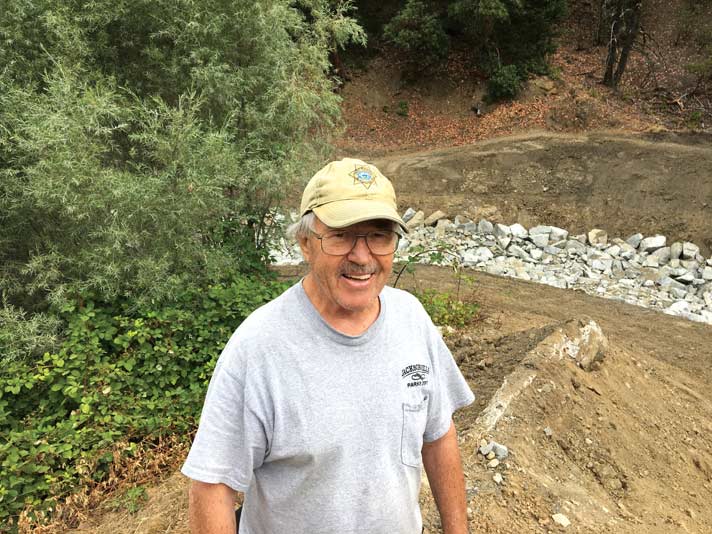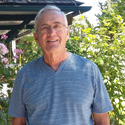Sensational Seniors – February 2017
I knew when I scheduled my “Sensational Seniors” interview with Tony Hess that I should allow ample time for it…I wasn’t disappointed! And while I thought I already knew quite a bit about Tony, I quickly realized that I’d just scratched the surface.
Eighty-one year old Tony Hess was born in Toledo, Ohio. At age one, his family moved to Iowa where his father became a manager for the US Gypsum Company. Tony enjoyed his Iowa life until age eleven when his father and three partners purchased a cement plant in Richfield, Utah. One of the companies’ major products was sheetrock, and in post WW II America, the construction trade was booming, with sheetrock in great demand. Tony says his father had a bit of an entrepreneurial spirit, and that besides the cement plant, purchased (with partners) a 3,000-acre ranch south of Sun Valley, where Tony got his first real introduction to the “hard work ethic” which was to serve him well in his working years. In addition to the ranch, his father helped finance a chemistry testing lab that developed piezoelectric crystals for submarine sonar gear.
Prior to ninth grade, the family moved to Salt Lake City where Tony was to complete high school, graduating in 1953. Upon graduation, he entered Dartmouth College, majoring in mechanical engineering. But after two years, he realized how much he missed the west and transferred to the University of Utah where he was to stay until getting his draft notice in 1957. Based on his aptitude testing, Tony became a cryptographic equipment repairman, (I’m not making this up) a top-secret position for repairing this very sophisticated code-breaking army equipment. He ended up as a repairman-instructor, spending the rest of his two-year service requirement in New Jersey.
After his service time was up, Tony, by his own admittance says, “I played around for a couple years…I did a lot of rock climbing and especially enjoyed the technical climbs.” Tony then married in 1962 and decided it was time to get serious. Utilizing the G.I. Bill, he re-entered the University of Utah, but settled on a degree in accounting. He eventually was able to use the G.I. Bill to obtain his MBA. In the meantime, he and his first wife adopted two children, Mindy, in 1965 and Eric, in 1967. At this time, Tony started his career with Boyles Brothers Drilling Company, one of two major hard-rock exploratory drilling companies in the western US. With his accounting degree secured, Tony was hired as a Management Information Systems (MIS) analyst, working with a Model 20 IBM computer that used the old punch card system and took up most of the room. After three years, he was promoted to manager of the fabrication and machine shop but, before assuming this position, he was told, “You first have to learn how to drill, so you are going to be a drilling deck hand for a year.” Tony remembers that, “I went from a comfortable desk job on Friday to being a drill helper on Monday on a 7,000 foot drill site.. and from working a standard eight-hour day to a twelve hour shift, ten days straight with four days off…living in a trailer in the Aspen trees.” Reflecting, he relates, “This was the best thing the company ever did for me and, while I did learn how to drill, I was not the best at it, the experience gave me credibility with the highly-skilled drillers.”
Tony continued to move up the company management chart, eventually becoming the northwest drilling manager with drill sites in Washington, Idaho and Montana and a field office in Spokane, Washington. Tony spent ten years in this position, but when his first wife passed away in 1983, he then moved back to Salt Lake City a few years later in 1986. Subsequent to that move, the drilling company was bought out by an investment-banking firm out of Boston and in the process, “ruined the wonderful culture of this great company.” Tony lasted with the new ownership for two years before being handed a resignation paper to sign. Tony can laugh at this now because two weeks prior to his termination he and his wife of 26 years, Joan, were married and “that was the wedding present from the company.” As an interesting side note, Tony’s son and Joan’s two daughters, all of whom were students at San Diego State University, had introduced Tony and Joan. Their first date was set-up by their children and happened at the San Diego Zoo!
After leaving Boyles Brothers Drilling Company, Tony and Joan spent two years in St. Paul, Minnesota, with Tony working for a geo-technical engineering company. Eventually, he worked his way back west to Bozeman, Montana, where he and three partners bought a small drilling company out of Idaho that specialized in underground mining. He helped run the company until 1998 and then retired. Although he and Joan would spend two more years in Bozeman, the severe Montana winters had them searching for a milder climate. Eventually, it was a dinner at the McCully House Inn that convinced them that “Jacksonville would be a wonderful place to live,” so they purchased a house and moved to Jacksonville in 2001. Enclosed within their first Jacksonville water bill they found a brochure and membership application for the Jacksonville Boosters Club. They soon joined this active organization which led to many friendships, a good deal of civic involvement and a lot of hours working on Boosters and Jacksonville projects. Tony is a great advertisement for the Boosters Club, saying “There is nothing better than the Jacksonville Boosters Club.” Shortly after joining the Boosters Club, Tony found himself on the Jacksonville Woodlands Association board; where he served as treasurer and the contracting officer for a $905,000 grant that financed a fuel reduction project in 2003-2004. That project cleaned-out dead and dying trees in the 300 woodland acres and on private land surrounding the woodlands, a great service to the affected landowners.
Tony’s next Jacksonville adventure started in 2003 when the Jacksonville City Council strongly considered selling the entire reservoir watershed acreage to the Motorcycle Riders Association (MRA), much to the displeasure of many Jacksonville citizens. At the time, Mayor Jim Lewis called for a “timeout” and asked that a Citizen Advisory Committee conduct a thorough year-long study of the issues regarding the watershed, including selling it. Tony signed up for this committee, and at the first meeting, was elected chairman. Meeting monthly, this committee, with broad representation including citizens, governmental agencies and the MRA, eventually recommended that the city retain and manage the watershed. It also suggested consideration of a land swap with either the BLM or MRA—this was eventually done years later which resulted in the city swapping some higher elevation land for closer-to-town MRA land.
The next task was to decide what to do with this acquired property. A two-year process ensued to work with the county to get the property designated as a “park.” In 2007 and 2008, Tony and other park ranger friends started building an extensive network of trails, bridges, kiosks and historical site designations… and the Forest Park was born. It now presents hikers with 25+ miles of interconnected trails, shelters, benches and any number of stunning views of Jacksonville and surrounding sites. While there are a number of people to thank for this massive effort, Tony Hess is certainly at the head of the list! For those of us who enjoy this gem of a park, we owe Tony our profound thanks.
Finally, I asked Tony what advice he would give someone contemplating retirement—his answer was, “When you turn 65 or 70, you just can’t turn it off. If you stop being active when you retire, you are not going to live long.”

 Mike McClain spent 32 years as a teacher and school administrator, retiring in 1999 as Superintendent of Central Point Schools. He and his wife relocated to Jacksonville four years ago and are enjoying immersing themselves in this unique community.
Mike McClain spent 32 years as a teacher and school administrator, retiring in 1999 as Superintendent of Central Point Schools. He and his wife relocated to Jacksonville four years ago and are enjoying immersing themselves in this unique community.